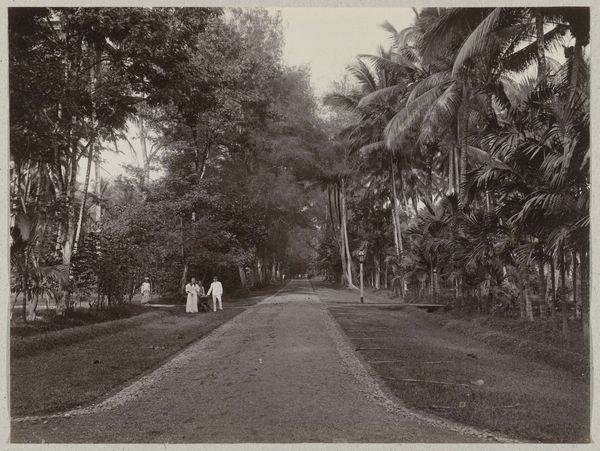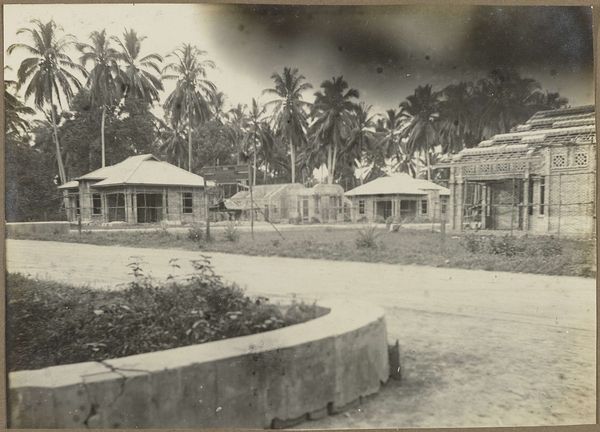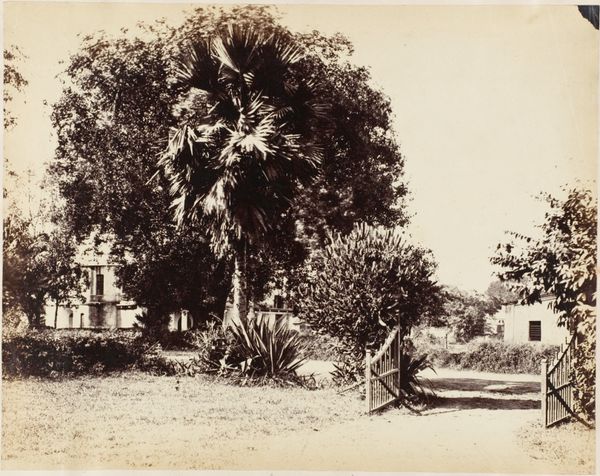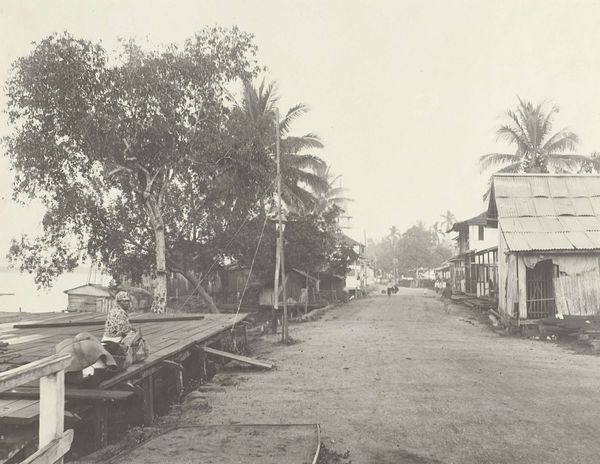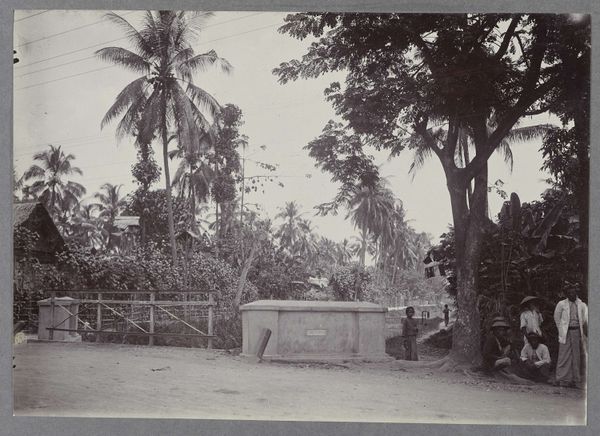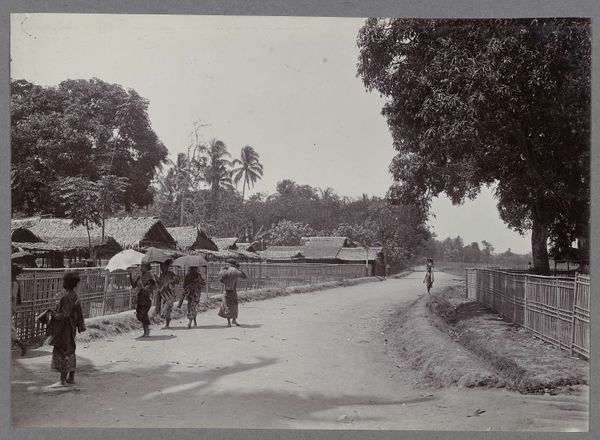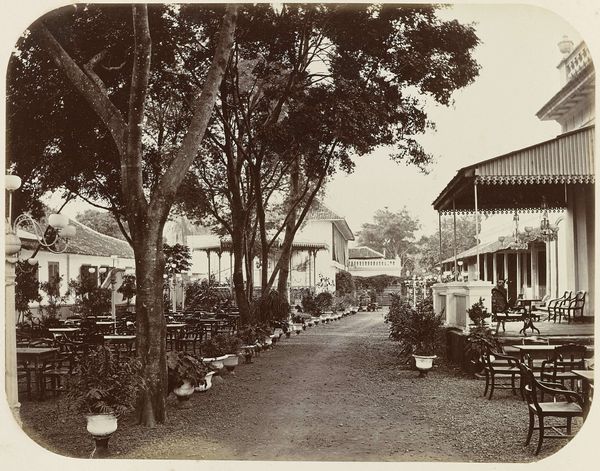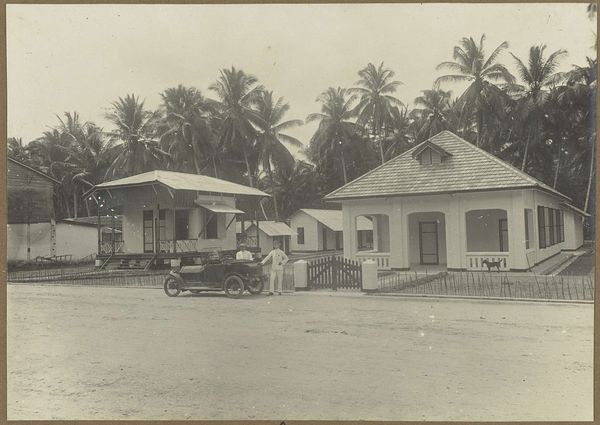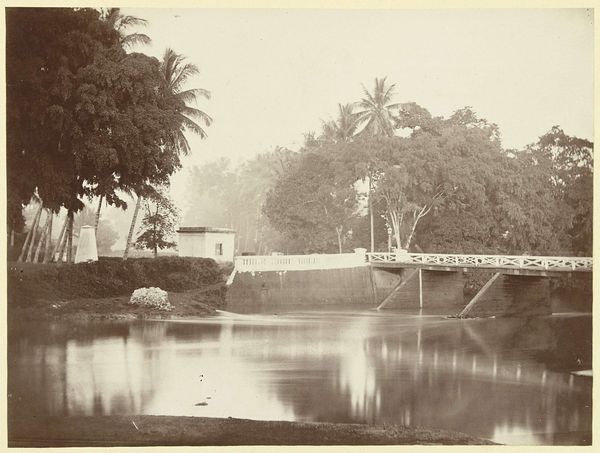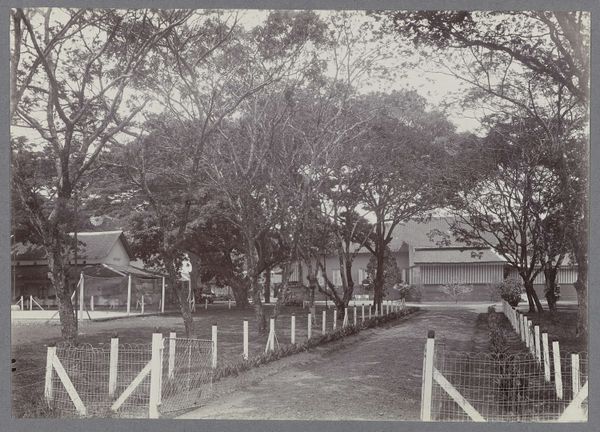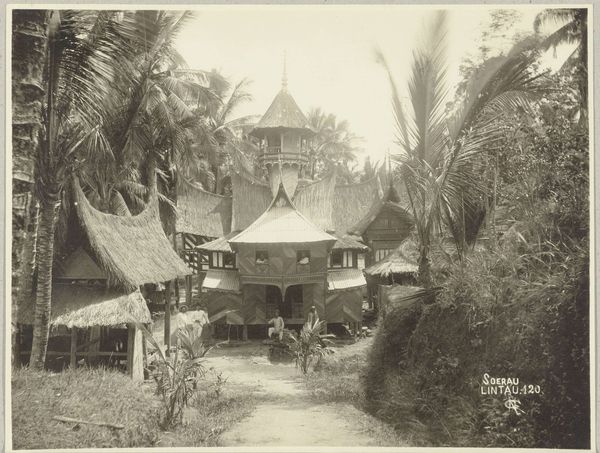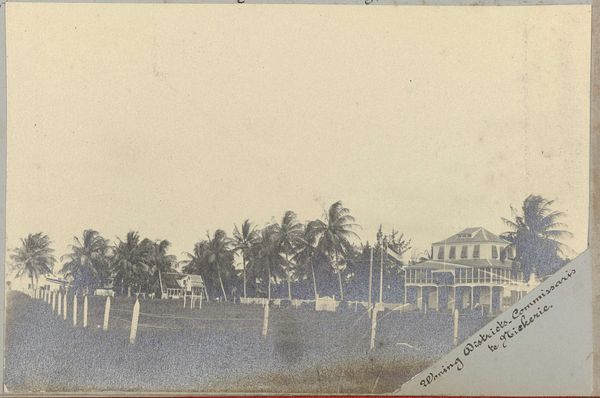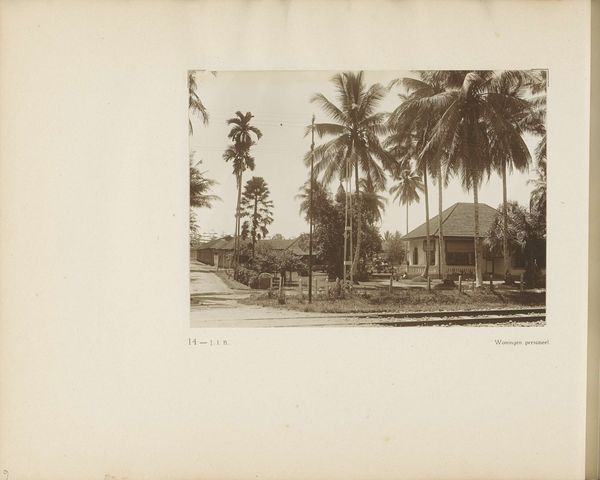
photography, gelatin-silver-print
#
black and white photography
#
landscape
#
photography
#
orientalism
#
gelatin-silver-print
#
monochrome photography
#
cityscape
#
islamic-art
#
monochrome
Dimensions: height 286 mm, width 378 mm
Copyright: Rijks Museum: Open Domain
Editor: Here we have Linnaeus Tripe's gelatin-silver print, "View of the Mosque of Nutter Owleah, Tiruchirappalli, India," dating from between 1858 and 1860. The sepia tones give it such an antique feel, almost like a scene from a forgotten world. It feels balanced in composition but somber in mood. What grabs you about this piece? Curator: It transports me. You know, it's not just a mosque, but a captured moment in time, a whisper of history. The way Tripe frames the mosque, almost hidden behind the vernacular architecture and the rampant vegetation, speaks volumes. It's a quiet observation, not a grand statement, don’t you think? Editor: It's almost voyeuristic, seeing it through the trees. Was this a common style for depicting such subjects? Curator: Indeed, there's a certain 'Orientalist' gaze at play. The Western photographer encountering and framing the 'exotic' East. Tripe, however, complicates this. He's not simply showcasing a monument; he's embedding it in the everyday life surrounding it. Notice the textures, the way the light dapples… It feels real, almost intimate. Does it make you wonder about his intentions, about what he wanted to communicate beyond the purely visual? Editor: I see what you mean. It’s like he’s trying to show the context. The architecture framing the path leading to the mosque feels humble and worn. I get the feeling he was trying to communicate what it was like to simply experience this space as a local. Curator: Exactly. And in doing so, he inadvertently tells us something about *himself*, doesn't he? It’s in these subtle details that we can begin to unpack the complexities of the colonial gaze and photographic intention. This photo is an exercise in mindful observation. Editor: It's amazing how much can be read into what initially appears to be just a simple photo of a mosque. It really expands my view on what photography of the time meant to both the subject and the photographer. Curator: Precisely! And that is where the real magic hides – in re-contextualizing and re-considering these slices of captured time.
Comments
rijksmuseum about 2 years ago
⋮
Tripe used paper rather than glass negatives. Not only were they unbreakable and easy to take along, but the light sensitive layer was also more resistant to the fierce heat and humidity in India and Burma. He took close to 1000 photographs as an officer in the British army. Tripe provided his printing papers with a thin layer of albumen, making them glossier than regular salted paper prints.
Join the conversation
Join millions of artists and users on Artera today and experience the ultimate creative platform.
